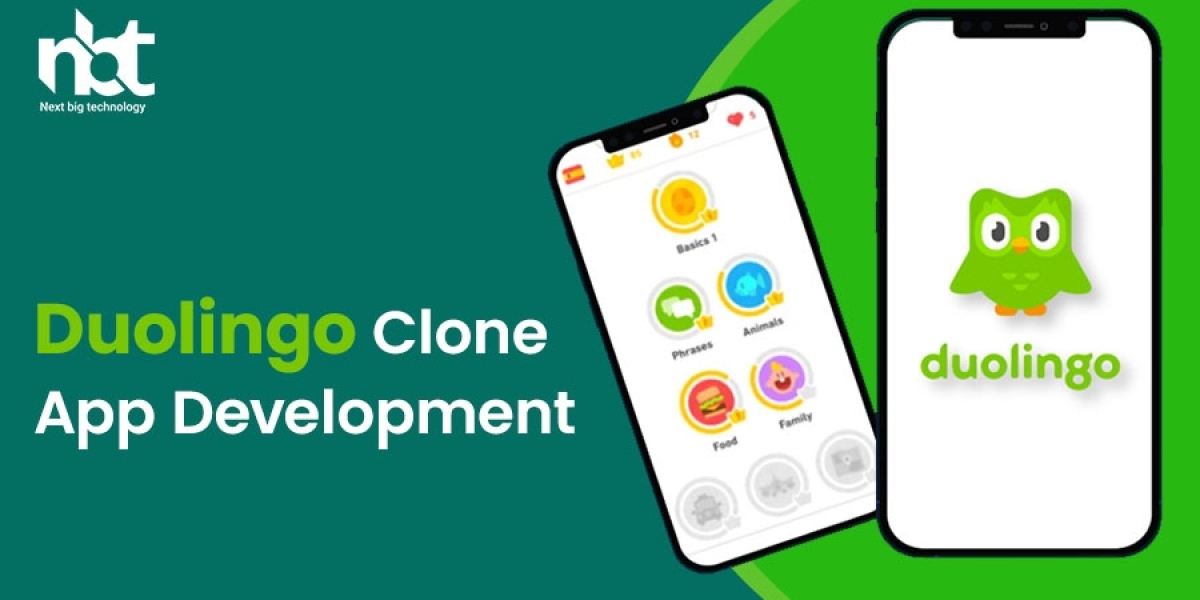In the rapidly evolving world of mobile applications, language learning apps like Duolingo have carved out a significant niche. These apps make language learning accessible, engaging, and efficient, offering users a gamified experience that turns studying into a fun and rewarding activity. If you're looking to develop a Duolingo clone, you're tapping into a lucrative market with vast potential. This guide will walk you through the essential steps and considerations for creating a successful language learning app.
Understanding the Core Features:
Before diving into development, it's crucial to understand the core features that make Duolingo so popular. These include:
- User-Friendly Interface: Duolingo’s intuitive interface helps users navigate through lessons effortlessly. Each screen is designed to be simple yet engaging.
- Gamification Elements: Points, levels, and streaks encourage users to continue learning. Leaderboards and achievements add a competitive element.
- Diverse Learning Modules: Duolingo offers reading, writing, listening, and speaking exercises. These modules cater to different learning styles.
- Adaptive Learning: The app adjusts difficulty based on the user’s progress, ensuring that learners remain challenged but not overwhelmed.
- Daily Reminders and Goals: Users can set daily goals and receive reminders, helping them build a consistent learning habit.
- Offline Mode: Allows users to download lessons and continue learning without an internet connection.
Step-by-Step Development Process:
- Market Research and Planning :
Begin with thorough market research to understand your target audience and competitors. Identify gaps in the market that your app could fill. Create a detailed project plan outlining the app's features, design, and development phases.
2.Choosing the Right Technology Stack :
Select a technology stack that suits your app’s requirements. For a language learning app, you might use.
Front-End: React Native or Flutter for cross-platform compatibility.
Back-End: Node.js or Django for robust server-side operations.
Database: MongoDB or PostgreSQL for storing user data.
APIs: Speech recognition and text-to-speech APIs for interactive exercises.
- Designing the User Interface (UI) and User Experience (UX):
Focus on creating a visually appealing and intuitive design. Use wireframes and prototypes to map out the user journey. Ensure the design is responsive and adapts seamlessly to different screen sizes.
4.Developing Core Features
User Authentication: Implement secure sign-up and login processes using email, social media, or single sign-on (SSO) options.
Course Content Management: Develop a system to create, update, and manage lessons. Incorporate multimedia elements like audio, images, and videos.
Gamification: Integrate points, badges, levels, and leaderboards. Use algorithms to adjust difficulty and keep users motivated.
Interactive Exercises: Develop various types of exercises (e.g., multiple-choice, fill-in-the-blank, matching, pronunciation practice) to engage users in different ways.
Progress Tracking: Allow users to track their progress with dashboards and statistics. Provide feedback and suggestions for improvement.
- Implementing Adaptive Learning Algorithms
Adaptive learning is a critical feature. Use machine learning algorithms to analyze user performance and adjust the difficulty of exercises accordingly. This personalization helps maintain user engagement.
- Adding Social Features
Integrate social features like discussion forums, peer reviews, and group challenges. These features can enhance user interaction and create a community feeling.
- Testing and Quality Assurance
Conduct extensive testing to identify and fix bugs. Perform usability testing to ensure the app is easy to navigate and meets user expectations. Test the app on various devices and operating systems to ensure compatibility.
- Launching the App
Prepare for the launch by optimizing the app store listing with keywords, engaging descriptions, and attractive screenshots. Plan a marketing strategy to promote the app across social media, blogs, and other channels.
- Gathering Feedback and Iterating
Post-launch, gather user feedback and monitor app performance. Use analytics to track user behavior and identify areas for improvement. Regularly update the app with new features and enhancements based on user feedback.
Post-Launch Considerations
Launching the app is just the beginning. Continuous improvement is key to long-term success. Here are some post-launch strategies.
Regular Updates: Keep the content fresh with new lessons, languages, and features.
User Engagement: Maintain user interest with regular challenges, notifications, and rewards.
Monetization: Explore various monetization strategies like in-app purchases, subscriptions, and ads.
Customer Support: Provide robust customer support to assist users with issues and queries.
Conclusion
Creating a Duolingo clone involves careful planning, a deep understanding of user needs, and a commitment to continuous improvement. By focusing on delivering a high-quality, engaging, and personalized learning experience, you can develop a language learning app that stands out in a competitive market. With the right approach, your app can help millions of users worldwide achieve their language learning goals, just like Duolingo.
Read More: - http://omninoz.com/products/duolingo-clone-app-script
Follow Us on Facebook: - https://www.facebook.com/omninosTechnologies
Follow Us on Twitter: - https://twitter.com/omninoss
Follow Us on Instagram: - https://www.instagram.com/omninosinsta/
Follow Us on Linkedin: - https://www.linkedin.com/company/omninos-solutions/
Address: - SCO 454 to 460, Sector 117, TDI South X2,Backside Star Hospital
Call US: +91 9988880293
Email US: - info@omninos.com









